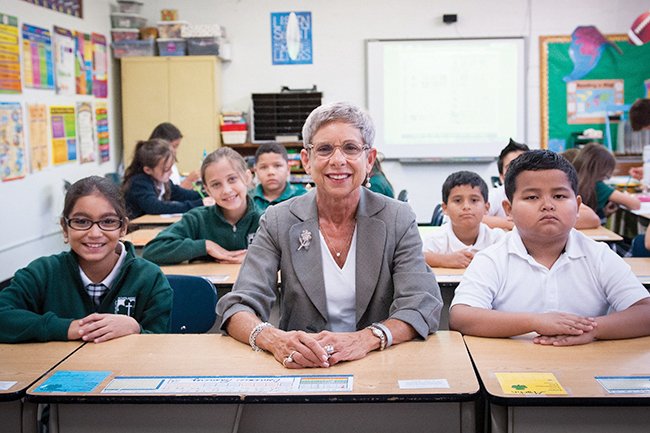by Kathy O’Hara
Dear friends of Catholic schools,
“Each child is a masterpiece of God created with precision for a specific purpose.”
This statement reflects a fundamental truth upon which Catholic schools in the Archdiocese of Kansas City in Kansas are based. I will come back to this at the end of the column!
Perhaps some of you are aware of the Hope Scale. The Hope Scale was developed in the mid-1990s by psychologists at the University of Kansas, in collaboration with other researchers, to determine the degree to which adults and children possess the attribute of hope.
The researchers defined hope (I am paraphrasing here) as the ability to set and achieve one’s goals. (I apologize to the researchers for such a simplification of their concept!)
Some time ago, students in our schools were asked to participate in studies conducted for this research. I recall being contacted by one of the researchers as the results of our students were analyzed.
The researcher wanted to know if I could offer any explanation for the significantly higher hope scores of the students in our Catholic schools, especially when compared to their racial, ethnic and socioeconomic peers.
Since at the time I was somewhat unfamiliar with the study, I asked the researchers many questions before I responded. Then I recall pausing and saying something like, “Well, of course, I have no ‘empirical evidence’ for this, but it seems to me that you are missing a fundamental component of hope.”
The researcher asked me to explain. I told her that, as Catholics, we hold that hope comes from faith. In fact, it is one of the three theological virtues — “So faith, hope, love abide, these three” (1 Cor 13:13).
I explained that I thought that it is essential to talk about faith, hope and love together. When that occurs, it is easier to understand why our Catholic school students are more hope-filled, which brings me back to the quote above.
When students are taught in school from preschool to 12th-grade that they are a masterpiece created by God for a plan he has for them, it helps them understand that they are important in this world.
When students are taught that God has given them specific gifts and talents to serve the plan he has for them, it helps them understand their inherent worth as a human person.
I am not suggesting that students in Catholic schools experience no struggles. But it seems to me that when one feels that intrinsic worth, it may be easier to have hope through those struggles.
In today’s world, more than ever, we owe it to our children to give them true hope that comes from faith.
¡Vaya con Dios!



